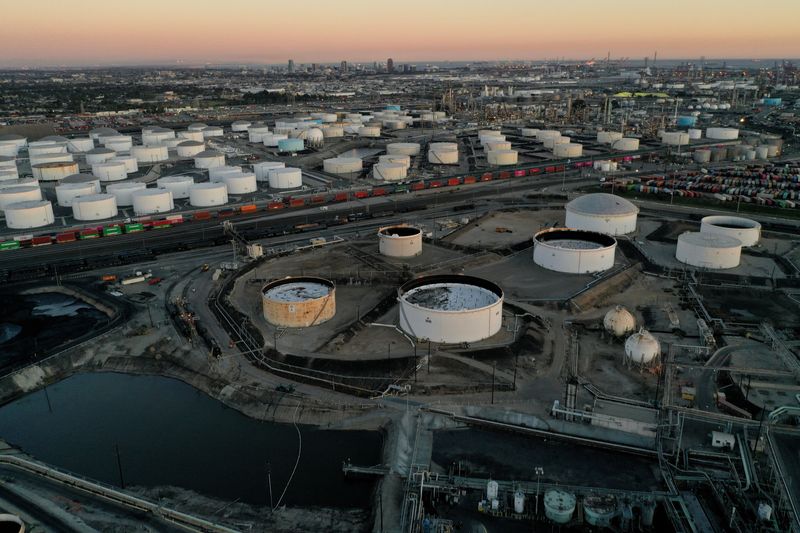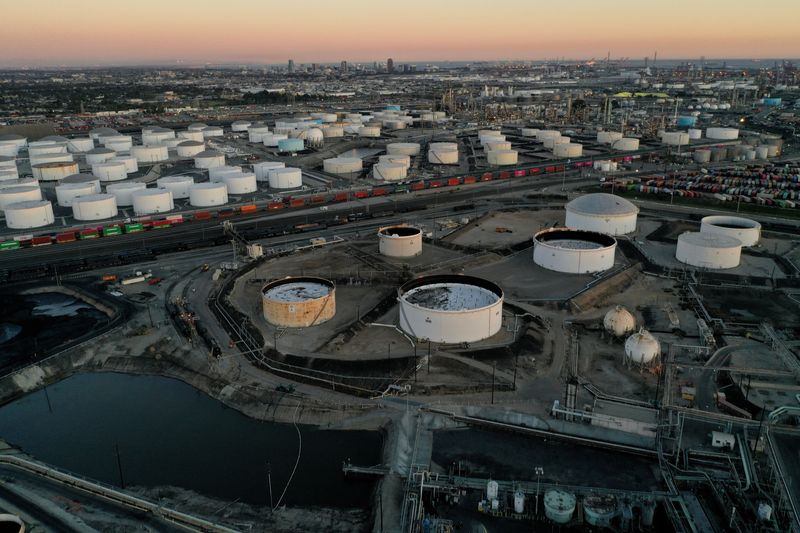
By Georgina McCartney
HOUSTON (Reuters) -Oil traded flat on Wednesday as the war between major oil producer Russia and Ukraine intensified, offsetting a rise in U.S. crude and gasoline stocks.
Brent crude futures for January were down 1 cent, or 0.01%, at $73.30 a barrel by 12:19 p.m. ET (1719 GMT).
U.S. West Texas Intermediate crude futures for December, due to expire on Wednesday, were up 17 cents, or 0.24%, at $69.56, while the more active WTI contract for January was up 5 cents, or 0.07%, at $69.29.
The intensifying war between Russia and Ukraine and subsequent concern around potential oil supply disruptions have helped keep a floor under prices this week.
“These risks to supply are definitely keeping the support here and offsetting to a degree concerns around the global demand outlook,” said John Kilduff, partner at Again Capital in New York.
Ukraine fired a volley of British Storm Shadow cruise missiles into Russia on Wednesday, the latest new Western weapon it has been permitted to use on Russian targets a day after it fired U.S. ATACMS missiles.
This has put geopolitical risk back in the market, StoneX energy analyst Alex Hodes said in a note on Wednesday.
“However, the concerns over additional sanctions or disruptions of Russian fuel or crude oil supplies appear misguided,” Hodes added, pointing to strong Russian fuel exports.
Long positions in WTI have declined significantly despite the added geopolitical risk, according to Aegis Hedging associate Christian Drolshagen, with hedge funds holding only 50% of summer levels, per CFTC data.
Elsewhere, the U.S. vetoed a U.N. Security Council resolution for a ceasefire in Gaza on Wednesday, buoying oil prices’ war risk premium on investors concerns around potential disruptions to global oil supplies as war in the Middle East continues.
“The market is very nervous something could happen with another escalation between the Israelis and Iranians,” said Again Capital’s Kilduff.
“Everyone is focused on Trump and U.S. producers being let loose, but the flip side of that is that sanctions are definitely back in the market as far as what happens next with Iranian supplies and its ability to export,” he added.
Offsetting some support from supply concerns on Wednesday, U.S. crude and gasoline stocks rose by more than expected last week, according to data from the Energy Information Administration.
Elsewhere, Norway’s Equinor said it had restored full output capacity at the Johan Sverdrup oilfield in the North Sea following a power outage. Equinor last month said the field was producing at peak capacity of around 755,000 barrels of oil equivalent per day.

Meanwhile, the U.S. Federal Reserve will trim interest rates next month but make shallower cuts in 2025 than expected just a month ago due to the risk of higher inflation from President-elect Donald Trump’s proposed policies, according to most economists in a Reuters poll.
Higher interest rates increase the cost of borrowing, which can slow economic activity and dampen demand for oil.
This post is originally published on INVESTING.


